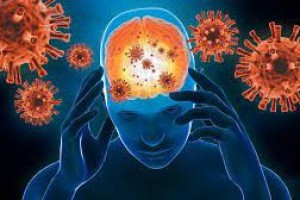Non-Invasive Brain Stimulation May Reduce Smoking
Non-invasive brain stimulation, such as rTMS, helps to reduce smoking frequency in nicotine-dependent people, a new study reports. Stimulating the dorsolateral prefrontal cortex with repetitive transcranial magnetic stimulation significantly reduced smoking frequency.
A new systematic review of randomized controlled trials has found evidence that non-invasive brain stimulation may reduce smoking frequency (number of cigarettes per day) in nicotine-dependent smokers.
Because nicotine can produce neuroadaptations in the brain that makes it hard to quit smoking, researchers have sought ways to treat nicotine dependence with non-invasive brain stimulation (NIBS) techniques that counteract abnormal brain activity associated with chronic nicotine exposure.
This review, published by the scientific journal Addiction, looked at twelve randomised controlled trials of NIBS methods on a combined total of 710 participants with nicotine dependence. It used a network meta-analysis technique to compare the benefits and safety of various types of NIBS.
Several NIBS techniques showed promising results, but the best results came from high-frequency repetitive transcranial magnetic stimulation (rTMS) of the left dorsolateral prefrontal cortex (DLPFC), which was associated with the greatest reduction in smoking frequency.
Nicotine affects the release of neurotransmitters in the brain, increasing brain activity and the release of dopamine. Image is in the public domain
Interestingly, none of the investigated NIBS appeared to reduce the severity of either craving or nicotine dependence, compared with the control groups. It may be that enhancement of DLPFC activity increases dopamine release, counterbalances the reward system, and helps patients cope with unaffected craving and withdrawal symptoms.
None of the investigated NIBS was associated with dropout rates significantly different from those of the control groups, suggesting that these kinds of treatments are well-tolerated.
Nicotine affects the release of neurotransmitters in the brain, increasing brain activity and the release of dopamine. Higher levels of dopamine bring pleasure to the smoker. Over time, chronic nicotine exposure causes the brain to produce more receptors to handle the increased brain activity.
When nicotine levels drop, such as when a smoker tries to quit, activity in the brain’s reward system decreases, causing withdrawal symptoms that encourage continued smoking.





Related Posts